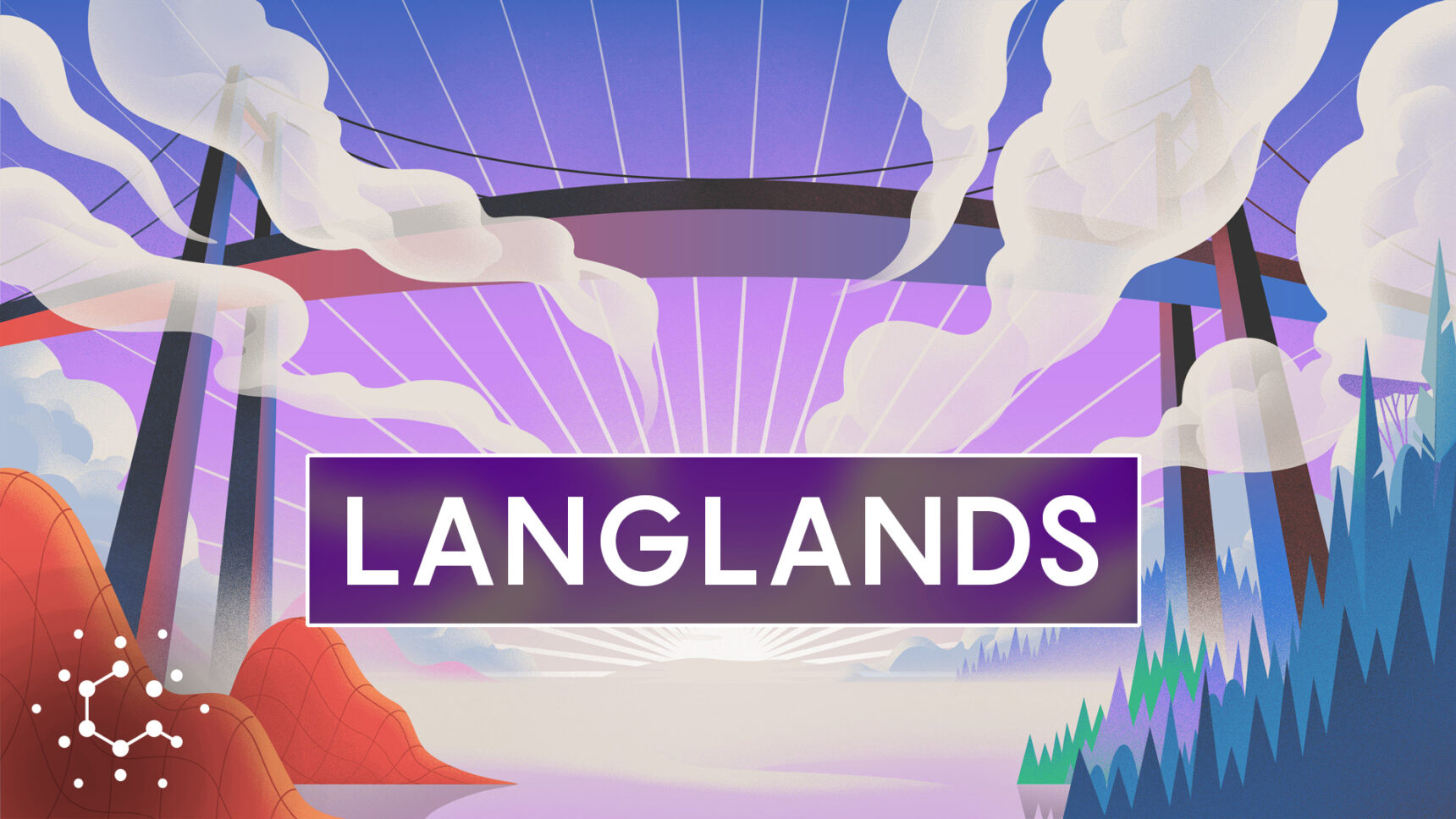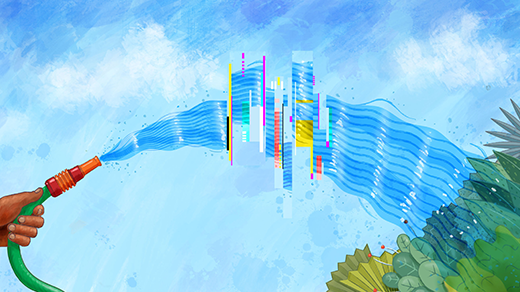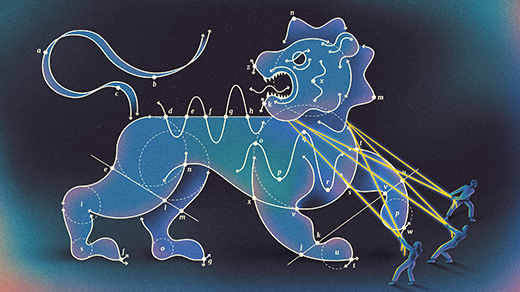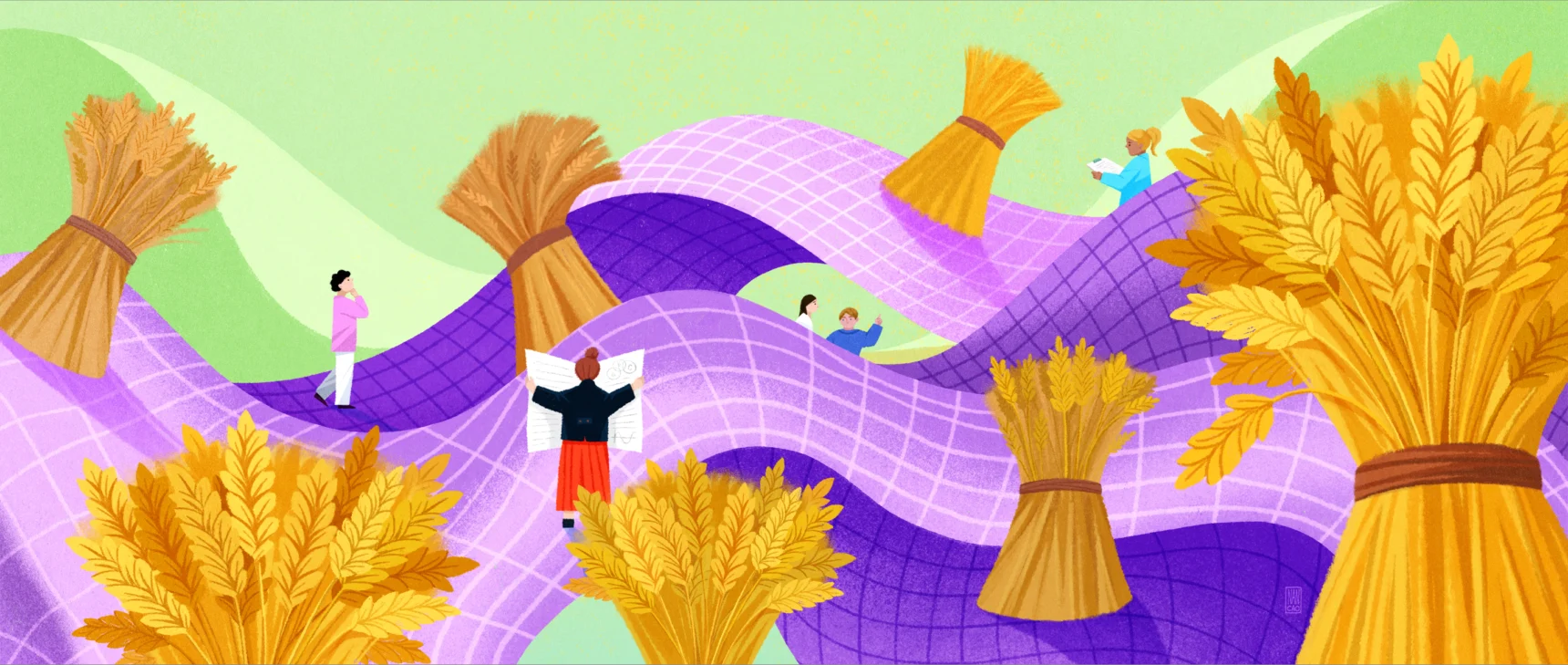Monumental Proof Settles Geometric Langlands Conjecture
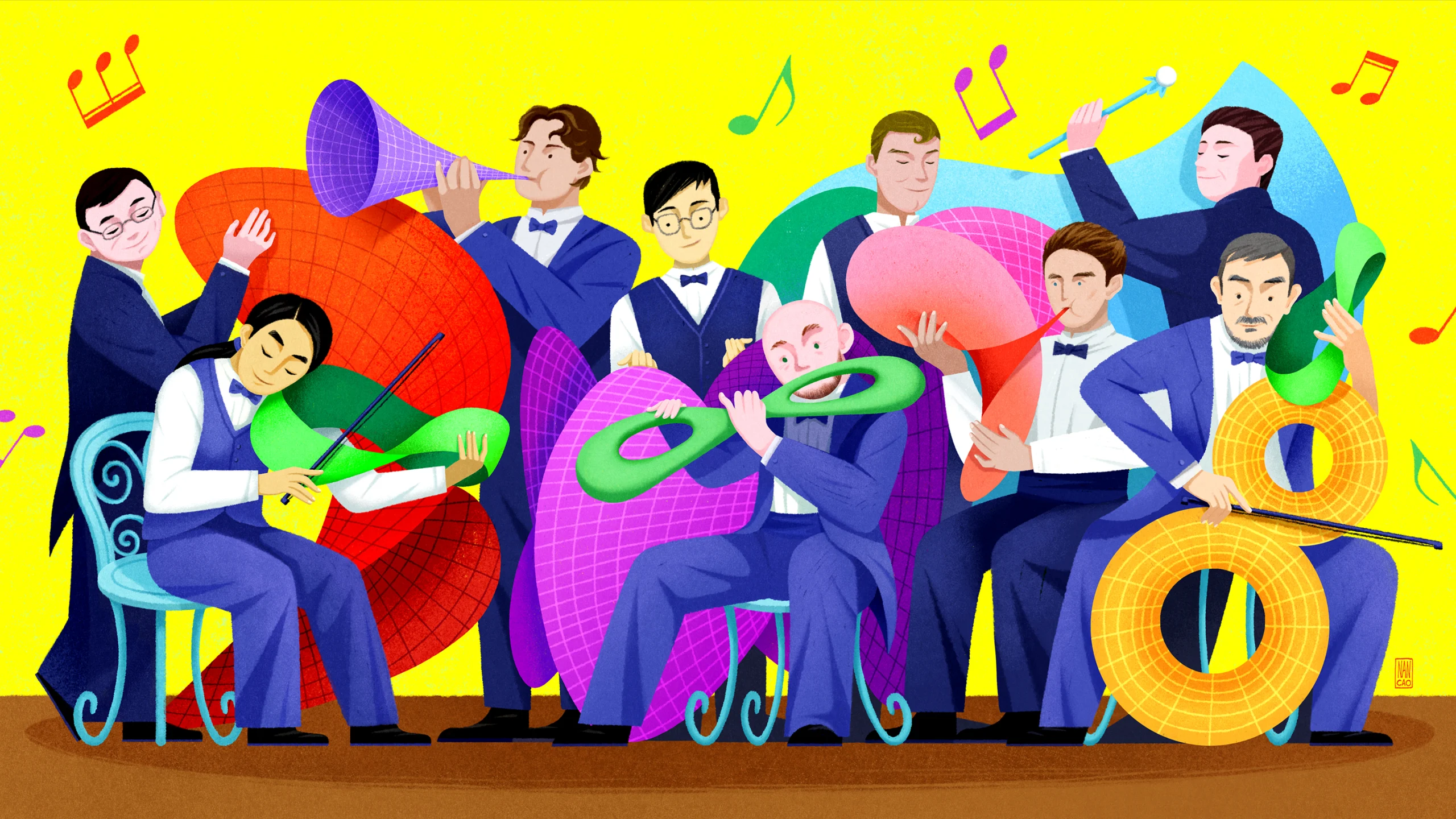
Nan Cao for Quanta Magazine
Introduction
A group of nine mathematicians has proved the geometric Langlands conjecture, a key component of one of the most sweeping paradigms in modern mathematics.
The proof represents the culmination of three decades of effort, said Peter Scholze, a prominent mathematician at the Max Planck Institute for Mathematics who was not involved in the proof. “It’s wonderful to see it resolved.”
The Langlands program, originated by Robert Langlands in the 1960s, is a vast generalization of Fourier analysis, a far-reaching framework in which complex waves are expressed in terms of smoothly oscillating sine waves. The Langlands program holds sway in three separate areas of mathematics: number theory, geometry and something called function fields. These three settings are connected by a web of analogies commonly called mathematics’ Rosetta stone.
Now, a new set of papers has settled the Langlands conjecture in the geometric column of the Rosetta stone. “In none of the [other] settings has a result as comprehensive and as powerful been proved,” said David Ben-Zvi of the University of Texas, Austin.
“It is beautiful mathematics, the best of its kind,” said Alexander Beilinson, one of the main progenitors of the geometric version of the Langlands program.
The proof involves more than 800 pages spread over five papers. It was written by a team led by Dennis Gaitsgory (Scholze’s colleague at the Max Planck Institute) and Sam Raskin of Yale University.
Gaitsgory has dedicated the past 30 years to proving the geometric Langlands conjecture. Over the decades, he and his collaborators have developed a massive body of work on which the new proof rests. Vincent Lafforgue, of Grenoble Alps University, likened these advances to a “rising sea,” in the spirit of the preeminent 20th-century mathematician Alexander Grothendieck, who spoke of tackling hard problems by creating a gradually rising sea of ideas around them.
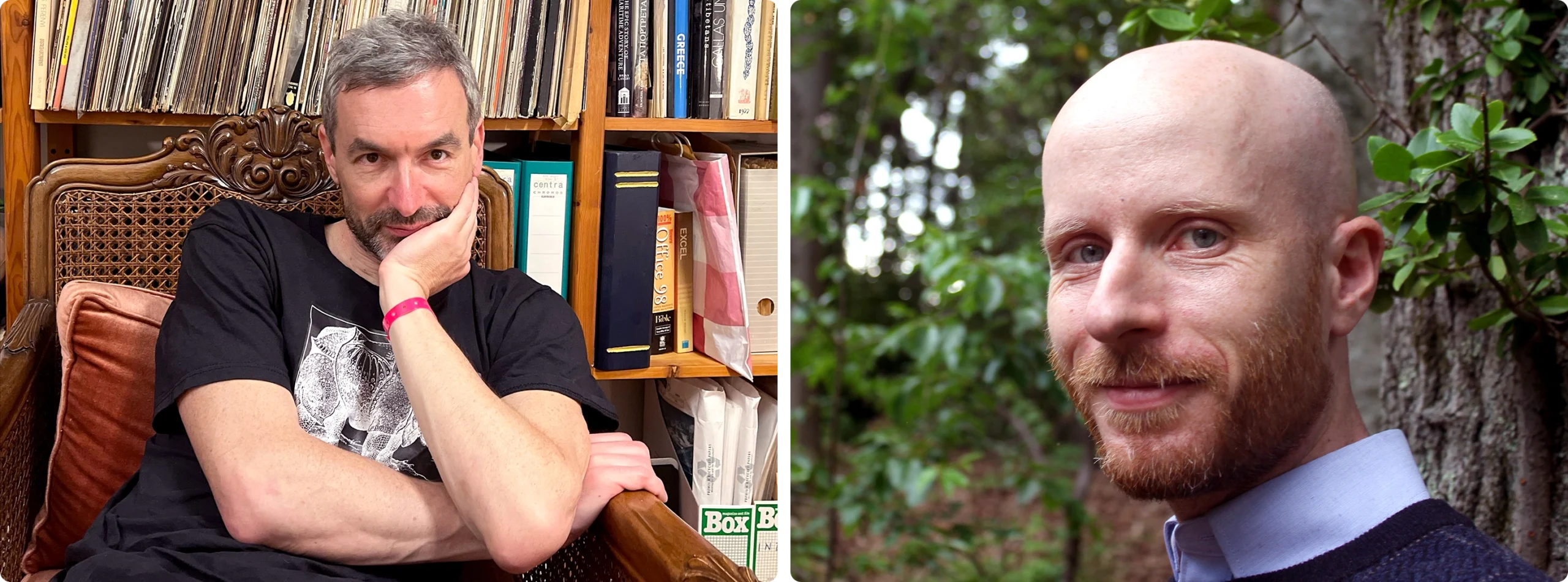
Dennis Gaitsgory (left) and Sam Raskin led the nine-person team that proved the geometric Langlands conjecture.
From left: Natasha Bershadsky; Charlotte Krontiris
It will take mathematicians a while to digest the new work, but many have expressed confidence that the core ideas are correct. “The theory has a lot of internal consistencies, so it’s difficult to believe there could be a mistake,” Lafforgue said.
In the years leading up to the proof, the research team created not one but many routes into the heart of the problem, Ben-Zvi said. “The understanding that they’ve developed is so rich and so broad, they’ve encircled the problem from every direction,” he said. “It had no way to escape.”
A Grand Unified Theory
In 1967, Robert Langlands, then a 30-year-old professor at Princeton University, laid out his vision in a handwritten 17-page letter to André Weil, the originator of the Rosetta stone. Langlands wrote that in the number theory and function field columns of the Rosetta stone, it might be possible to create a generalization of Fourier analysis with startling scope and power.
In classical Fourier analysis, a procedure called the Fourier transform creates a correspondence between two different ways of thinking about the graph of a wave (such as a sound wave). On one side of the correspondence are the waves themselves. (We’ll call this the wave side.) These include both simple sine waves (which in acoustics are pure tones) and more complicated waves that are combinations of sine waves. On the other side of the correspondence is the spectrum of frequencies of the sine waves — that is, their pitches. (Mathematicians call this the spectral side.)
The Fourier transform goes back and forth between these two sides. In one direction, it allows you to break down a wave into a collection of frequencies; in the other, it allows you to reconstruct the wave from its constituent frequencies. The ability to move across this divide is central to a wide range of applications — without it, we wouldn’t have modern telecommunications, or signal processing, or magnetic resonance imaging, or numerous other essentials of modern life.
Langlands proposed that something similar occurs in the number theory and function field columns of the Rosetta stone, but with more complicated waves and frequencies.
In each of these columns separately, there is a wave side that consists of a collection of special functions analogous to repeating waves. The purest of these, which are called eigenfunctions (from the German for “characteristic”), play the role of sine waves. Each eigenfunction has a characteristic frequency. But whereas the frequency of a sine wave is a single number, the frequency of an eigenfunction is an infinite list of numbers.
There’s also a spectral side. This consists of a collection of objects from number theory that, Langlands argued, label the spectrum of frequencies of the eigenfunctions. A procedure akin to the Fourier transform, he proposed, connects the wave side and the spectral side. “That’s kind of a miraculous thing,” Ben-Zvi said. “It’s not something, a priori, we had any reason to expect.”
The waves and their frequency labels come from widely disparate realms of mathematics, so the correspondence between them — when it can be proved — often comes with bountiful rewards. For instance, a proof of the number theory Langlands correspondence for a comparatively small collection of functions in the 1990s enabled Andrew Wiles and Richard Taylor to prove Fermat’s Last Theorem, which for three centuries had been one of the most famous open questions in mathematics.
Langlands’ program came to be seen, in the words of Edward Frenkel of the University of California, Berkeley, as a “grand unified theory of mathematics.” Yet even as mathematicians turned their efforts to proving larger and larger pieces of Langlands’ vision, they were aware that this vision was incomplete. It didn’t seem to be able to tell a story of waves and their frequency labels in the third column of the Rosetta stone — the geometry portion.
A Grain of Sand
Right from the beginning of Langlands’ work, mathematicians had an idea of what the spectral side of a geometric Langlands correspondence should look like. This third column of Weil’s Rosetta stone concerns compact Riemann surfaces, which are spheres, doughnuts, and doughnuts with multiple holes. A given Riemann surface has a corresponding object called its fundamental group, which tracks the different ways that loops can wind about the surface. Mathematicians suspected that the spectral side of the geometric Langlands correspondence should consist of certain distillations of the fundamental group known as its “representations.”
Mark Belan for Quanta Magazine
Mark Belan for Quanta Magazine
If the Langlands correspondence was to manifest in the geometric column of the Rosetta stone, then each representation of a Riemann surface’s fundamental group should be a frequency label — but of what?
Mathematicians couldn’t find any collection of eigenfunctions whose frequencies seemed to be labeled by the representations of the fundamental group. Then in the 1980s, Vladimir Drinfeld, now at the University of Chicago, realized that it might be possible to create a geometric Langlands correspondence by replacing eigenfunctions with more complicated objects called eigensheaves — even though at the time, he only knew how to construct a few of these.
Sheaves are much more esoteric than functions, and number theorists didn’t know what to make of this proposed geometric cousin of the Langlands correspondence. But the geometric Langlands program, despite the abstruseness of its wave side, has one big advantage over the number theory version of Langlands. In geometric Langlands, the frequency of an eigensheaf is governed by the points on the Riemann surface, and each point on a sphere or doughnut looks pretty similar at close range. But in number theory Langlands, the frequencies are governed by prime numbers, and each prime has unique qualities. Mathematicians don’t know “how to go in a nice way from one prime to another,” said Ana Caraiani, a number theorist at Imperial College London.
Riemann surfaces play a large role in physics, particularly in conformal field theory, which governs the behavior of subatomic particles in certain force fields. In the early 1990s, Beilinson and Drinfeld showed how to use conformal field theory to build certain particularly nice eigensheaves.
The link to conformal field theory gave Beilinson and Drinfeld a place to start thinking about how to build a version of Fourier analysis for sheaves. “That’s the little grain of sand that this is crystallizing about,” Ben-Zvi said.
Beilinson and Drinfeld set forth a rich vision of how the geometric Langlands correspondence should work. It wasn’t only that each representation of the fundamental group should label the frequency of one eigensheaf. This correspondence, they believed, should also respect important relationships on both sides, a prospect Beilinson and Drinfeld took to calling the “best hope.”
In the mid-1990s, Beilinson gave a series of lectures on this developing picture at Tel Aviv University. Gaitsgory, then a graduate student there, drank in every word. “I got an imprinting like a new-hatched duckling,” Gaitsgory recalled.
In the 30 years since, the geometric Langlands conjecture has been the main driver of Gaitsgory’s mathematical career. “All these years have been nonstop work, getting closer and closer, developing various tools,” he said.
The Rising Sea
Beilinson and Drinfeld had stated their conjecture only loosely, and it turned out that they had been a bit too simplistic about how the relationships in their “best hope” should work. In 2012, Gaitsgory and Dima Arinkin, of the University of Wisconsin, Madison, figured out how make the “best hope” into a precise conjecture. The following year, Gaitsgory wrote an outline of how a proof of the geometric Langlands conjecture might go. That outline relied on a host of intermediate statements, many of which had not yet been proved. Gaitsgory and his collaborators set out to prove them.
Over the next few years, Gaitsgory and Nick Rozenblyum of the University of Toronto wrote two books about sheaves totaling nearly 1,000 pages. Only once in the two-volume set is the geometric Langlands program even mentioned. “But its purpose was to lay the foundations, which we ultimately used very intensively,” Gaitsgory said.
When Covid-19 struck in 2020, Gaitsgory suddenly found his calendar emptied. “I spent three months lying on my bed and just thinking,” he said. That thinking eventually led to a six-author paper that, while primarily about the function field column of the Langlands program, held the seed of what would later become a crucial component of the proof of the geometric Langlands conjecture: a way to understand how each eigensheaf contributes to what we can think of as “white noise.”
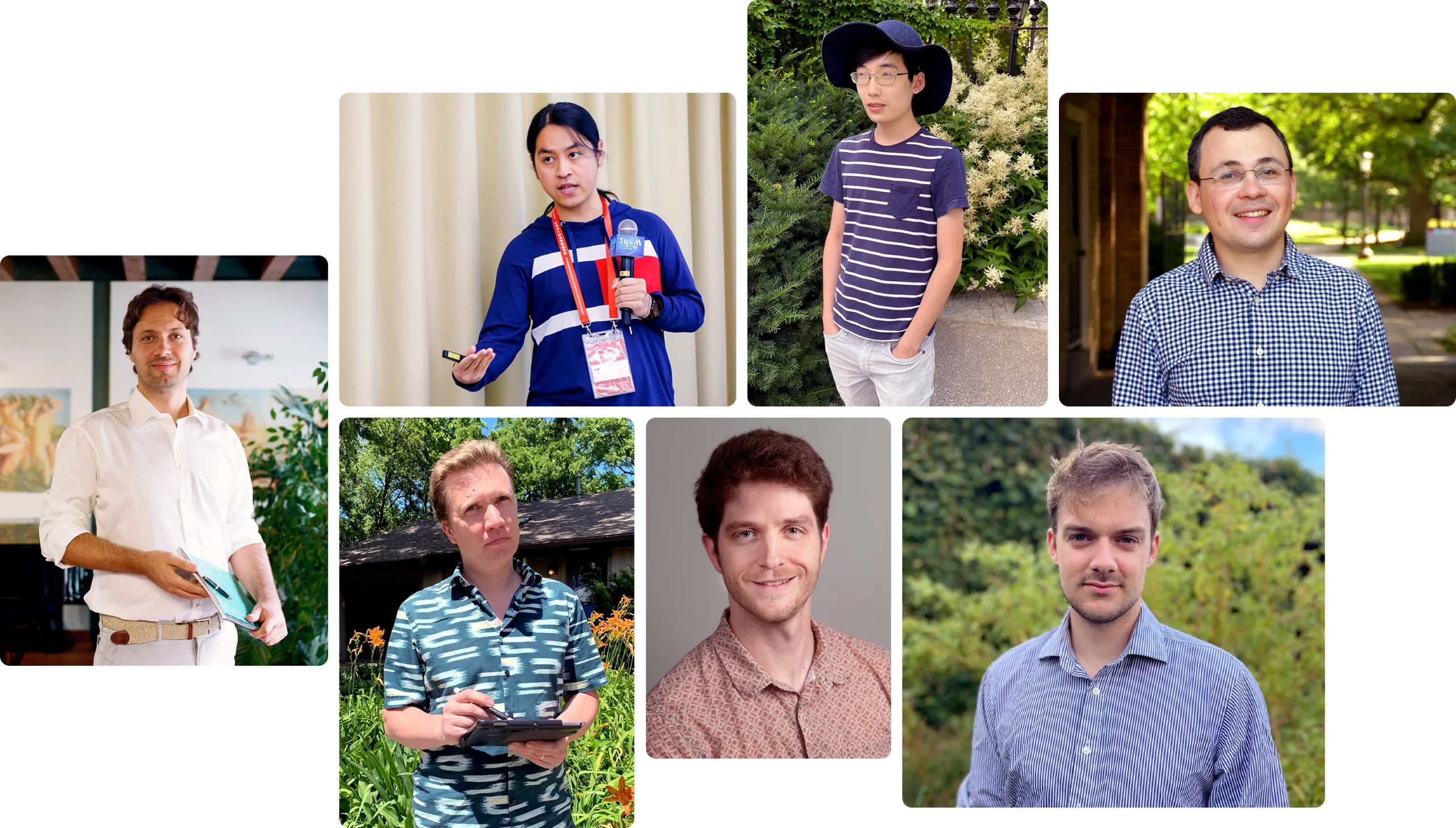
Clockwise from left: Dario Beraldo, Lin Chen, Kevin Lin, Nick Rozenblyum, Joakim Færgeman, Justin Campbell and Dima Arinkin.
Giancarlo Rado; Yau Mathematical Science Center; Wyatt Reeves; Diana Tyszko; Lisa Smith; Jean Lachat; Alex Arinkin
In classical signal processing, sound waves get built up out of sine waves whose frequencies correspond to the pitches contained in the sound. It’s not enough to know which pitches the sound contains — you must also know how loud each pitch is. That information allows you to write your sound as a combination of sine waves: just start with the sine waves of amplitude 1, then multiply each sine wave by an appropriate loudness factor before adding the sine waves together. The sum of all the different amplitude-1 sine waves is what we commonly refer to as white noise.
In the world of the geometric Langlands program, eigensheaves are supposed to play the role of sine waves. Gaitsgory and his collaborators had identified something called the Poincaré sheaf that seemed to be serving the role of white noise. But the researchers didn’t know whether each eigensheaf is even represented in the Poincaré sheaf, let alone whether they all have the same amplitude.
In the spring of 2022, Raskin, together with his graduate student Joakim Færgeman, showed how to use the ideas in the six-author paper to prove that each eigensheaf does contribute to the Poincaré sheaf. “After Sam’s and Joakim’s paper, I was certain we’ll do it within a short period of time,” Gaitsgory said of proving the geometric Langlands conjecture.
The researchers needed to show that all the eigensheaves make equal contributions to the Poincaré sheaf, and that the fundamental-group representations label the frequencies of these eigensheaves. The trickiest part, they came to realize, was handling representations of the fundamental group called irreducible representations.
The solution for these irreducible representations came to Raskin at a moment when his personal life was filled with chaos. A few weeks after he and Færgeman posted their paper online, Raskin had to rush his pregnant wife to the hospital, then return home to take his son to his first day of kindergarten. Raskin’s wife remained in the hospital until the birth of their second child six weeks later, and during this time Raskin’s life revolved around keeping life normal for his son and driving in endless loops between home, his son’s school and the hospital. “My whole life was the car and taking care of people,” he said.
He took to calling Gaitsgory on his drives to talk math. By the end of the first of those weeks, Raskin had realized that he could reduce the problem of irreducible representations to proving three facts that were all within reach. “For me it was this amazing period,” he said. His personal life was “filled with anxiety and dread about the future. For me, math is always this very grounding and meditative thing that takes me out of that kind of anxiety.”
By early 2023, Gaitsgory and Raskin, together with Arinkin, Rozenblyum, Færgeman and four other researchers, had a complete proof of Beilinson and Drinfeld’s “best hope,” as modified by Gaitsgory and Arinkin. (The other researchers are Dario Beraldo of University College London, Lin Chen of Tsinghua University in Beijing, and Justin Campbell and Kevin Lin of the University of Chicago.) It would take the team another year to write up the proof, which they posted online in February. While the papers follow aspects of the outline Gaitsgory developed back in 2013, they both simplify his approach and go beyond it in many ways. “Very bright people contributed a lot of new ideas to this crowning achievement,” Lafforgue said.
“It wasn’t just that they went and proved it,” Ben-Zvi said. “They developed whole worlds around it.”
Further Shores
For Gaitsgory, the fulfillment of his decades-long dream is far from the end of the story. A host of further challenges await mathematicians — exploring the connection to quantum physics more deeply, extending the result to Riemann surfaces with punctures, and figuring out the implications for the other columns of the Rosetta stone. “It feels (at least to me) more like that one piece of a big rock has been chipped off, but we are still far from the core,” Gaitsgory wrote in an email.
Researchers working in the other two columns are now eager to translate what they can. “The fact that one of the major pieces has fallen should have major repercussions throughout the Langlands correspondence,” Ben-Zvi said.
Not everything can carry over — for instance, in the number theory and function field settings, there is no counterpart to the conformal field theory ideas that enabled researchers to construct special eigensheaves in the geometric setting. Much of the proof will need serious adjustment before it can be made to work in the other two columns, warned Tony Feng of Berkeley. It remains to be seen, he said, whether “we can even transport the ideas to a different context where it was not designed to work.”
But many researchers are optimistic that the rising sea of ideas will eventually reach these other domains. “It’s going to seep through all the barriers between subjects,” Ben-Zvi said.
In the past decade, researchers have started turning up unexpected connections between the geometric column and the other two. “If [the geometric Langlands conjecture] had been proved 10 years ago, then the results would be very different,” Feng said. “It wouldn’t have been appreciated that it could potentially have ramifications outside [the geometric Langlands] community.”
Gaitsgory, Raskin and their collaborators have already made progress on translating their geometric Langlands proof to the function field column. (Some of the discoveries Gaitsgory and Raskin made on the latter’s long car drives are “still to come,” Raskin hinted.) If successful, this translation will prove a much more precise version of function field Langlands than mathematicians knew or even conjectured before now.
Most translations from the geometry column to the number theory column pass through function fields along the way. But in 2021, Laurent Fargues, of the Mathematics Institute of Jussieu in Paris, and Scholze devised what Scholze called a wormhole that carries ideas from the geometric column directly over to a part of the number theory Langlands program.
“I’m definitely one of the people who are now trying to translate all this geometric Langlands stuff,” Scholze said. With the rising sea having spilled over into thousands of pages of text, that is no easy matter. “I’m currently a few papers behind,” Scholze said, “trying to read what they did in around 2010.”
Now that the geometric Langlands researchers finally have their lengthy proof down on paper, Caraiani hopes they will have more time to talk to researchers on the number theory side. “It’s people who have very different ways of thinking about things, and there’s always a benefit if they manage to slow down and talk to each other and see the other’s perspective,” she said. It’s only a matter of time, she predicted, before the ideas from the new work permeate number theory.
As Ben-Zvi put it, “These results are so robust that once you get started, it’s hard to stop.”
